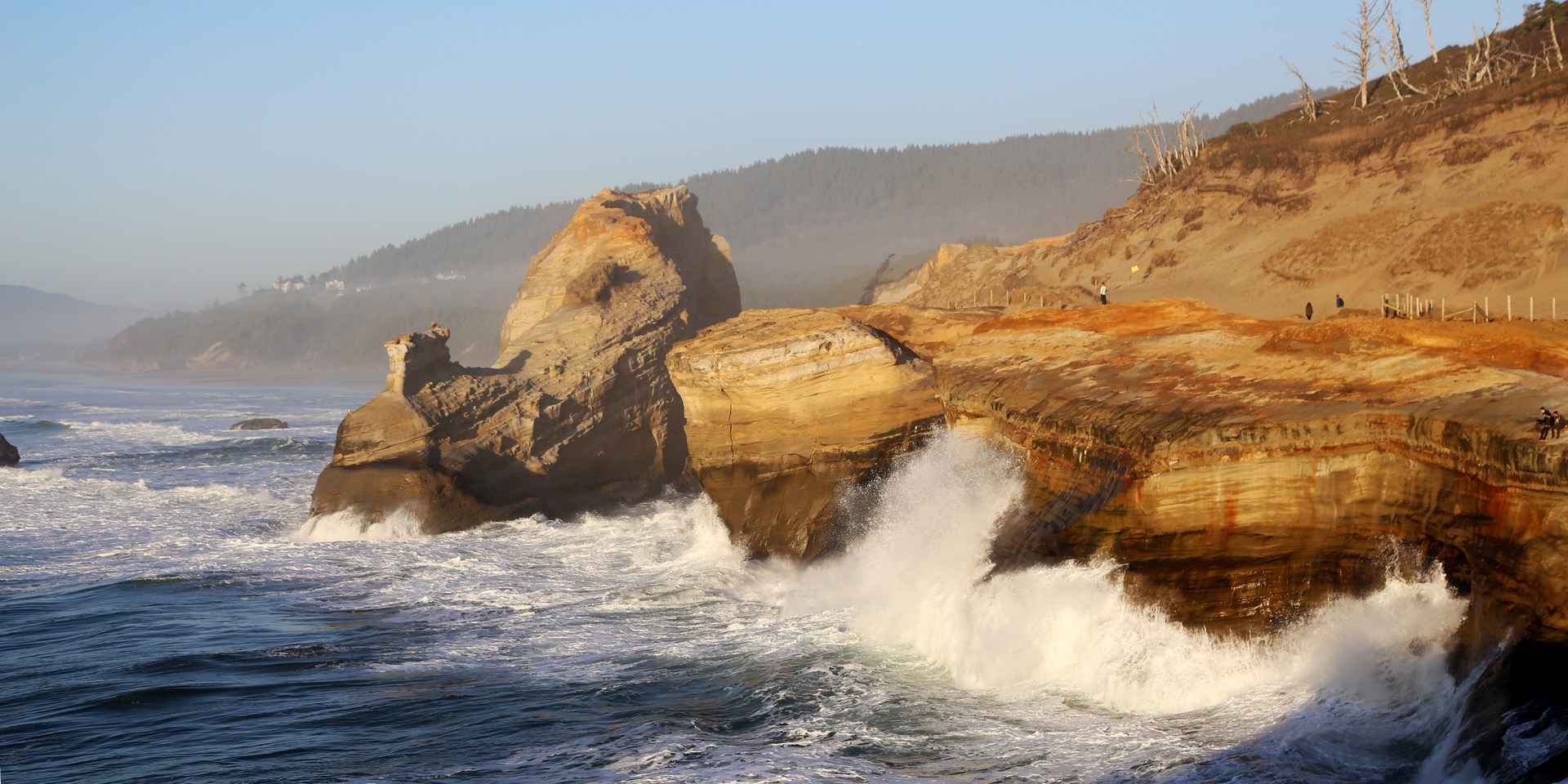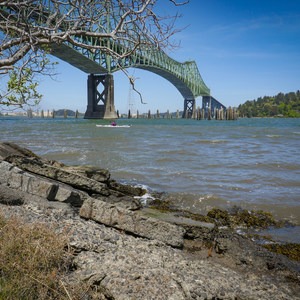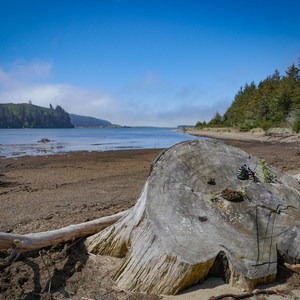This article is provided courtesy of the Oregon Parks and Recreation Department.
Beware The Sneaker Wave and Lurking Log | Dangerous Rip Currents | Tidal Influence | Beware of Cliff Edges
Beware the Sneaker Wave and Lurking Log
They´re called sneaker waves because they appear without warning, often surging high up on the beach with deadly force, and they are impossible to predict. Sneaker waves also carry a large amount of sand that can saturate your clothes, weighing you down and making escape difficult if not impossible. Never turn your back on the ocean. The ocean is strong enough to pick up even the biggest log and plop it down on top of you. Some logs may look small, but even the tiny ones can be waterlogged and weigh tons. If you see a log in the surf or on wet sand, stay off it.
Dangerous Rip Currents
Rip currents are strong currents of water that rush out to sea. They are stronger than even the best swimmer. These currents can swiftly sweep unwary beachcombers and waders off their feet and out to sea. Rip currents may appear as dark, choppy water. Any time you see debris and foam floating out to sea, chances are you have found a rip current. Avoid the area. Parents, keep your kids close when playing in the ocean. If caught in a rip current, don't panic. Swim parallel to the beach until you are out of the current, then head for the beach.
Tidal Influence
Incoming tides isolate rocks from headlands and the shore. Avoid the temptation of strolling out to an interesting rock without knowing when the tide rolls back in. Free tide tables are readily available at state park offices, information centers and many shops and motels. Stay off rocks and small, enclosed beaches. Know when the tide is coming in by visiting the tidetable website at the Hatfield Marine Science Center. Tides and waves can sweep over rocks, jetties and headlands, knocking you off and carrying you out to sea. Assume nothing is "high enough," and avoid exposed rocks, jetties and headlands during strong wave action (like during and after storms).
Beware of Cliff Edges
Assume that all cliff edges are unstable. Wet trails or soft sand and earth can make for unstable footing. Rocks can be slippery even when it isn’t raining. Make sure you wear proper footwear, and stick to the trails. Stay behind guard fences and railings, and don´t get too close to the edge. Standing at the base of an oceanside cliff can be dangerous, especially if it has an overhang. In some places, winter storms and high waves have eroded the shoreline, increasing the chance of collapse and slides. Beware of falling rocks, and don´t climb on bluffs and eroding hillsides. Don´t walk along the base of cliffs unless absolutely necessary.
A profound concept originally envisioned by governor Oswald West, in 1967 the Oregon legislature ultimately realized his vision of making the entire Oregon Coast forever open to the public in a piece of landmark legislation titled the Oregon Beach Bill, officially making all 363 miles public land. "The People's Coast" is truly a one-of-a-kind coastline, a unique blend of mountains and rocky stacks, towering old growth forests, marine sanctuaries, tide pools and kelp forests, charming towns, historic fishing communities, world-class golfing, breweries, and simply jaw-dropping scenic beaches. We encourage you to plan your next trip at visittheoregoncoast.com or by calling (541) 574-2679.






Comments
Sign In and share them.